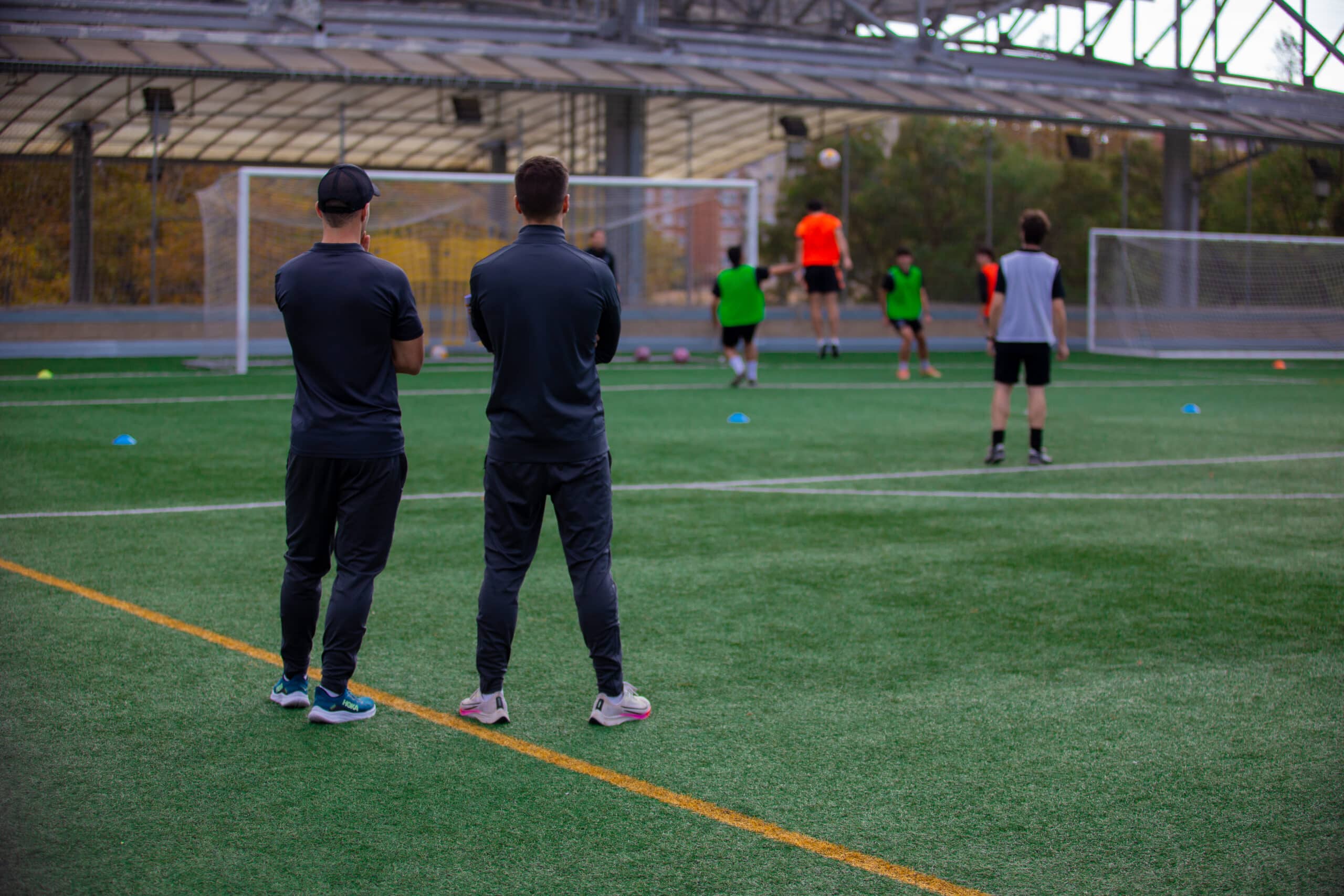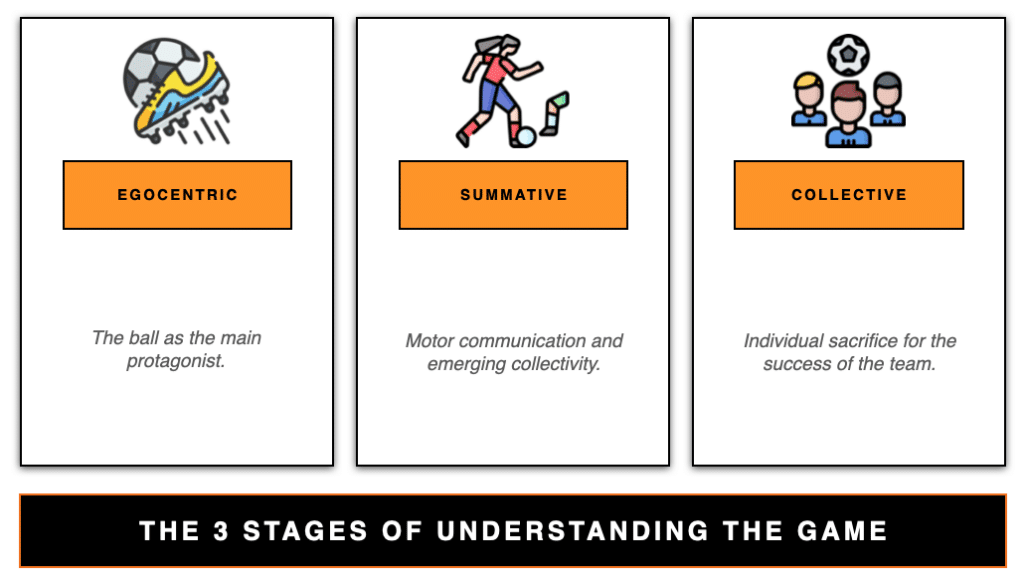The development of young players goes beyond the simple observation of chronological age. Understanding the different stages of game understanding becomes crucial. By integrating the theories of Piaget (1987), Lasierra and Lavega (1993), and the proposal of Ardá and Casal (2003), we can unravel the fundamental phases that mark the path to optimal development in this sport.
The following article explores in detail the egocentric, summative and collective stages, delving into how young footballers go through these phases during their ludological evolution.
Egocentric Stage: The Ball as a Protagonist
In this initial phase, children focus their attention on the ball and its manipulation. Their focus is on individual achievement, disregarding the actions of others. Possession of the ball is their priority, leading to behaviours such as excessive driving the ball with their heads down, excessive dribbling and inefficient space management. This stage highlights a lack of understanding of joint participation.
Summative Stage: Motor Communication and Emerging Collectivity
As youth players progress, they understand motor communication and give way to interaction with others. Although playing actions are still perceived as the sum of individual efforts, there is a growing receptiveness to collective settings. The idea of looking for teammates emerges, improving space management and activating players further away. The transition from psychomotor to socio-motor play begins.
Collective Stage: Individual Sacrifice for Team Success
The last phase is characterised by the ability to sacrifice personal success in favour of collective success. The players show full interaction, generating collective play where integration in the system is total. Space management is precise, associative play is evident, and there is an understanding of when to apply collective or individual solutions.
Therefore, contrary to common belief, evolution in these stages does not follow a strict chronological age line. The progression depends on experiences and cognitive development, marked by processes of accommodation and assimilation according to Piaget (1987).
Differentiating chronological parameters is not necessary, but an understanding of the stages of play is crucial. It clearly determines the level of knowledge and learning of a player, conditioning the approach in the teaching-learning process. It is essential to align training sessions with the stage of game understanding in order to enhance the development of the player.
Conclusion
In conclusion, knowing the stages of game understanding is essential to effectively guide the development of players. While age may be an indicator, a focus on ludological development provides a more accurate picture of individual needs. This ensures an educational approach that is tailored to each player’s skills and knowledge, encouraging holistic growth in the sport of football.









